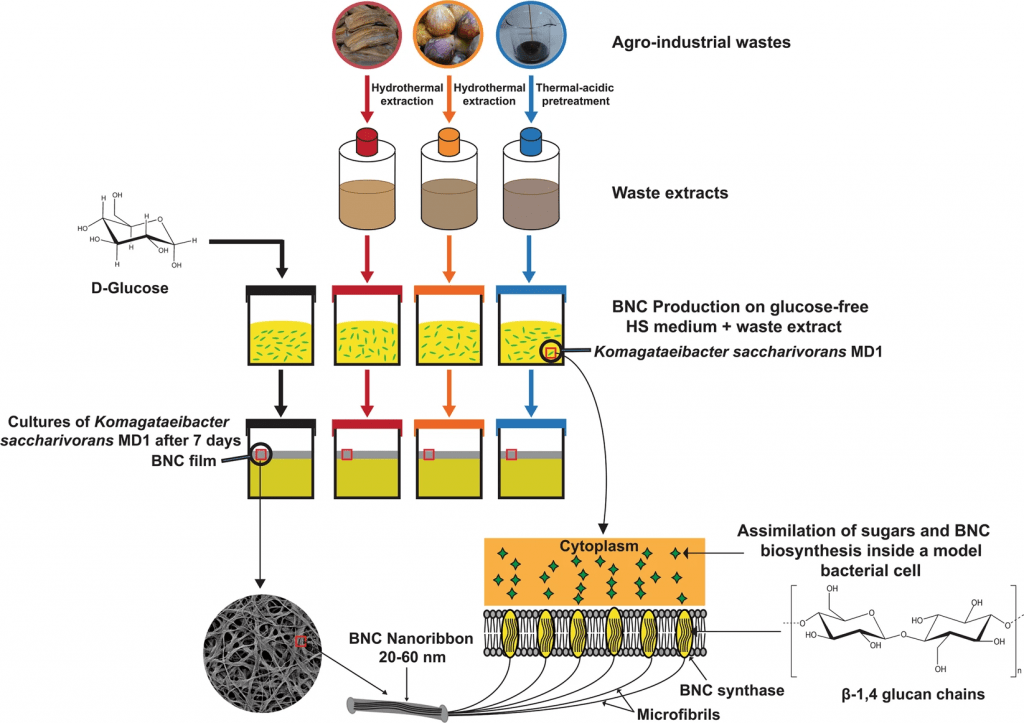
Hot off the press: new paper in Scientific Reports!
We are pleased to announce that a paper on bacterial nanocellulose authored by Deyaa Abol-Fotouh, a former member of N&N Group, and Anna Roig, has been recently published in the open access journal Scientific Reports. The article can be found here.
“Bacterial nanocellulose from agro-industrial wastes: low-cost and enhanced production by Komagataeibacter saccharivorans MD1”
Abstract: Bacterial nanocellulose (BNC) has been drawing enormous attention because of its versatile properties. Herein, we shed light on the BNC production by a novel bacterial isolate (MD1) utilizing various agro-industrial wastes. Using 16S rRNA nucleotide sequences, the isolate was identified as Komagataeibacter saccharivorans MD1. For the first time, BNC synthesis by K. saccharivorans MD1 was investigated utilizing wastes of palm date, fig, and sugarcane molasses along with glucose on the Hestrin-Schramm (HS) medium as a control. After incubation for 168 h, the highest BNC yield was perceived on the molasses medium recording 3.9 g/L with an initial concentration of (v/v) 10%. The physicochemical characteristics of the BNC sheets were inspected adopting field-emission scanning electron microscope (FESEM), atomic force microscopy (AFM), X-ray diffraction (XRD), and Fourier transform infrared (FTIR) analysis. The FESEM characterization revealed no impact of the wastes on either fiber diameter or the branching scheme, whereas the AFM depicted a BNC film with minimal roughness was generated using date wastes. Furthermore, a high crystallinity index was estimated by XRD up to 94% for the date wastes-derived BNC, while the FTIR analyses exhibited very similar profiles for all BNC films. Additionally, mechanical characteristics and water holding capacity of the produced BNCs were studied. Our findings substantiated that expensive substrates could be exchanged by agro-industrial wastes for BNC production conserving its remarkable physical and microstructural properties.
Anna Roig, bacterial cellulose, Bacterial nanocellulose, Deyaa, Deyaa Youssef, new paper, new publication

